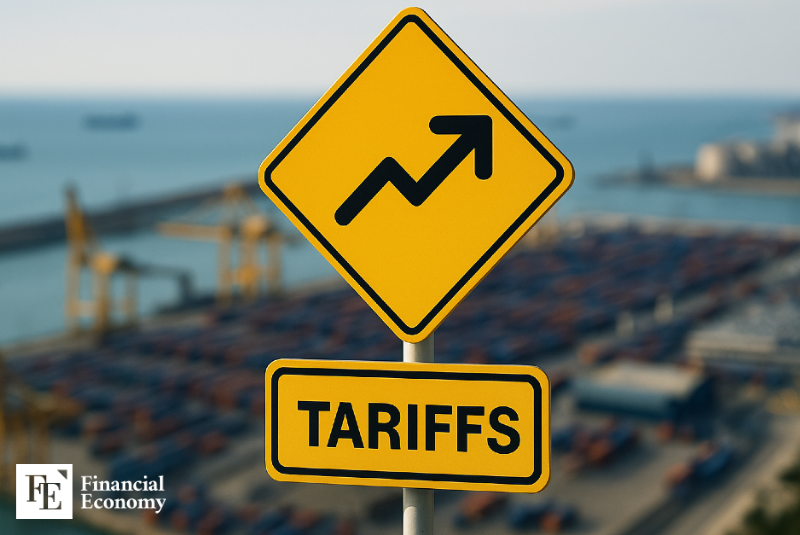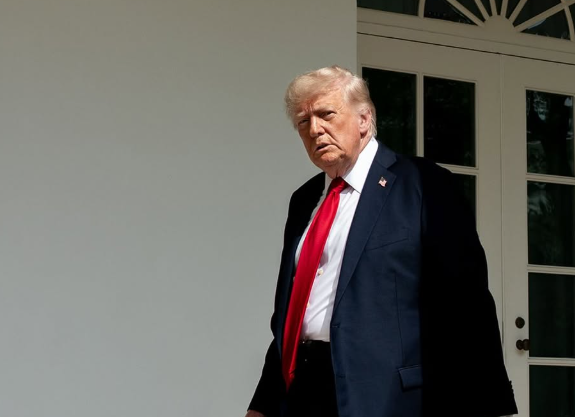“Steel Cuts Tightened by Derivative Duties” – Trump’s Tariff War Inflicts Pain on U.S. Industry
Input
Modified
50% tariffs imposed on steel and aluminum content in products Applied even to goods already in transit U.S. food and manufacturing sectors warn of inevitable supply chain disruptions

The United States, which has been imposing tariffs of up to 50% on steel and aluminum products, has announced an additional 407 categories of steel and aluminum derivative products subject to the same duty. The measure applies a 50% tariff on the value of steel or aluminum contained in such goods. As a result, direct repercussions are materializing for U.S. companies—food and beverage producers in particular are accelerating shifts in packaging materials—yet the Trump administration remains intent on pressing ahead with steep tariffs in a bid to wrest control of critical minerals dominated by China.
U.S. Expands 50% Steel Tariffs to 407 More Product Categories
According to the Federal Register on the 19th (local time), the Department of Commerce’s Bureau of Industry and Security (BIS) added 407 product groups containing steel or aluminum—including fire extinguishers, machinery, and construction materials—to the tariff list of “derivative” products. As a result, wind turbines, mobile cranes, railcars, motorcycles, marine engines, furniture, home appliances (such as refrigerators and dryers), and cosmetic packaging materials (such as aerosol cans) are all subject to duties. The new measure took effect immediately at midnight on the 18th Eastern time and, critically, applies even to goods already in transit without exception.
Under the new rules, the steel and aluminum inputs in affected products face a 50% tariff, while remaining components are taxed at reciprocal national tariff rates. For example, in cosmetic exports, the metal content in containers incurs a 50% tariff, while other parts are taxed according to country-specific duties. Certain automotive and appliance components are also covered. The Commerce Department specified auto exhaust systems, electrical steel for EVs, bus and air conditioner parts, and refrigerator, freezer, and dryer components (with aluminum additions) as newly included. The measures are based on Section 232 of the Trade Expansion Act, which authorizes the President to impose tariffs or other restrictions if imports of specific goods are deemed to threaten national security.
U.S. Companies Turn to Plastic and Paper as Can Costs Surge
President Trump has waged his tariff war ostensibly to shield American industries from cheap Chinese imports, but as steel and aluminum used in food packaging come under the levy, U.S. domestic firms are sustaining significant blows. Andy Rusick, Vice President of Sales and Marketing at canned goods maker Pacific Coast Producers, projected that “by next spring, can supply prices could rise by as much as 24% due to tariff impacts.” The company expects this year’s tariff-related cost increases to reach between $8 million and $10 million, with next year’s costs climbing as high as $40 million.
In response, Pacific Coast is considering shifting to paper-based cartons produced by Switzerland’s Tetra Pak or SIG Group, or adopting cheaper foil pouches for restaurant-grade tomato sauces. Earlier in February, Coca-Cola CEO James Quincey also told investors that rising can costs could prompt the company to expand use of plastic packaging. SIG Group CEO Samuel Sigrist added that “aseptic cartons that contain no aluminum are gaining traction” and that “trade frictions are accelerating strategic shifts in packaging.”
U.S. aluminum smelters themselves are unlikely to escape collateral damage. If market demand for aluminum contracts, the result could be lower capacity utilization and job cuts, rather than expanded production. Far from bolstering “domestic industry protection,” tariff policy risks undermining the very foundation of U.S. manufacturing.

A Gambit to Seize Critical Mineral Leverage
President Trump is not unaware of such side effects. Nevertheless, his persistence in advancing punitive tariffs is widely seen as a calculated move to secure leverage over critical minerals. Intensifying competition over mineral supply chains makes American industries—heavily dependent on imports—especially vulnerable.
The Department of Energy’s recent announcement of a $1 billion funding program to strengthen mining, processing, and manufacturing technologies for critical minerals essential to semiconductors and EVs is likewise viewed as a counter to China’s weaponization of its market dominance. Indeed, rare earths featured prominently in the latest third round of U.S.–China trade negotiations, following the first and second rounds. Trump’s decision on the 11th to extend the trade war truce with China by an additional 90 days is also interpreted within this context.
China accounts for roughly 60% of global rare earth mining and more than 90% of processing, effectively monopolizing supply chains. As rare earths are indispensable across advanced industries—from semiconductors and EVs to defense manufacturing—China’s export curbs could destabilize global markets. In particular, China commands nearly all gallium production (98.7%), a key material for semiconductors and displays. Risks, however, extend well beyond gallium. According to the Korea Resources Corporation’s supply-risk index, copper, molybdenum, and tin are classified as “of concern,” while tungsten, gallium, antimony, and indium are rated “caution.” Copper, a critical input for the electronics and electrical industries, is already showing price rises that exacerbate supply uncertainty.
In the same vein, Trump’s August 18 proposal to Russia—framed as a peace plan to end the Ukraine war—reportedly offered Moscow access to critical minerals. The proposal is said to include allowing Russia to utilize U.S. natural resources in Alaska, easing certain sanctions on Russia’s aerospace sector, and granting access to rare earth deposits in Russian-occupied Ukrainian territories, alongside a joint mining investment plan to accelerate Ukraine’s mineral development. Furthermore, Trump shortened his original ceasefire deadline from “within 50 days” to “within 10 days,” warning that failure to end the war quickly would result in secondary tariffs not only on Russia but also on nations conducting business with Moscow. Notably, Russia is currently absent from the Trump administration’s tariff target list.





















